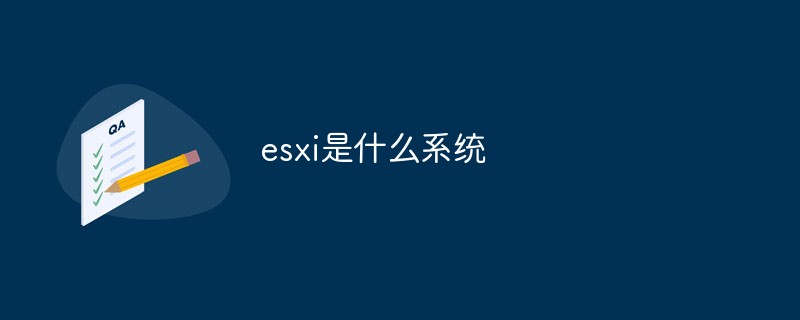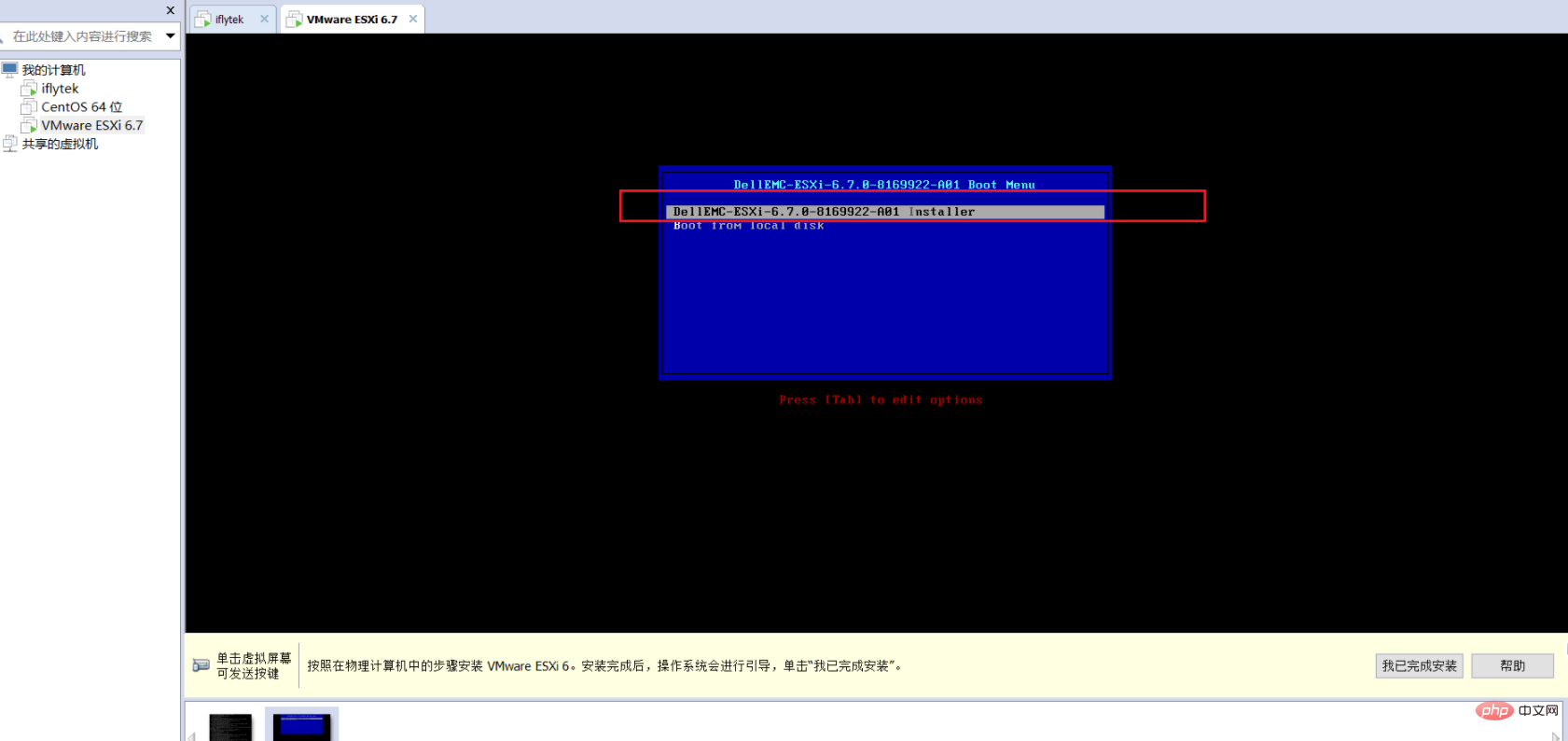
The full name of esxi is "VMware ESXi". It is a powerful bare metal management system that can be installed directly on a physical server. It is a virtual software; ESXi itself can be regarded as an operating system, using the Linux kernel, and the installation method is Bare metal mode can be installed directly on a physical server without installing other operating systems. It is designed to run virtual machines, minimize configuration requirements and simplify deployment; by directly accessing and controlling underlying resources, ESXi can effectively Partition hardware to consolidate applications and reduce costs.

The operating environment of this tutorial: windows10 system, Vmware ESXi 6.7, Dell G3 computer.
esxi, the full name of "VMware ESXi", is a powerful bare metal management system that can be installed directly on a physical server. It is a virtual software that does not require the installation of other operating systems. It is the basis for VMware server virtualization. By directly accessing and controlling underlying resources, VMware ESXi can effectively partition hardware to consolidate applications and reduce costs. It is an industry-leading efficient architecture.
VMware ESXi itself can be regarded as an operating system. It uses the Linux kernel and the installation method is bare metal. It can be installed directly on the physical server without installing other operating systems. It is designed for running virtual machines, Designed to minimize configuration requirements and simplify deployment. At present, some overseas server merchants support the deployment of ESXi system servers, such as Megalayer, BudgetVM, etc. Interested friends can pay attention.
Introduction to the main advantages of VMware ESXi system:
It can effectively integrate hardware resources to achieve higher capacity utilization.
Improve performance to gain a competitive advantage.
Streamline IT management with centralized management capabilities.
Reduce CAPEX and OPEX and achieve IT cost savings.
Minimizing the hardware resources required to run the hypervisor means increased efficiency.
Steps to install Vmware ESXi 6.7
1. Create a virtual machine

2. Select to install the operating system later

3. Select VMware ESX(X), VMware ESXi6. (Here you can see that Workstaion also provides us with the type of ESXi to choose from)

4. Name and select the installation location

5. Specify the disk size

6. Click Customize Hardware

7. Select esxi's iso image file path

8. Click Finish. At this point our virtual machine is configured, and now we are about to install esxi.

#9. Start the virtual machine we just configured. The esxi installation interface will pop up. We select item 1 to start the installation wizard.

#10. The configuration has started to be loaded. We wait for the progress bar to finish.

#11. Press the enter key to continue.

12. Press F11 to accept the license agreement.

13. This step is to select the disk installation location of esxi. If you want to install esxi on the specified disk or U disk, just select the corresponding disk. Select it. Then press enter to continue.

#14. For keyboard layout, just keep US Default.

#15. Enter the password. The password must meet the password requirements, including letters, numbers, and special characters. (Note: The default user of esxi is root, so here is the root password)

16. Press F11 to actually start installing esxi.
#17. Wait for the installation to complete.
#18. When the installation is completed, you will be prompted to restart. Remove the installation media when prompted to restart.
19. Restarting
#20. Restart completed. This is the interface of esxi. We can perform some configurations. , such as IP modification, etc. If you don't need to modify the configuration (you don't need to do the following steps), then follow the page prompts to enter the URL in the browser to manage esxi from the web.

21. Press F2 to enter the configuration modification page. Modifying the configuration is an important matter, so you need to enter the root account password for authentication.
#22. Enter the system configuration page. If we need to modify the IP, then select the "Configure Network" item and press the enter key to enter the network configuration modification.
#23. Select the IPv4 item and press the enter key to enter the network configuration modification.
#24. Select the ""Set Static IP"" item with the up-line arrow, and then press the space bar to anchor the line to modify the IP. Finally, enter enter to indicate OK. If you continue to exit the previous level, you will be prompted to save the configuration. Just select save.
25. Web page management esxi. Enter the URL, select Advanced, and select Continue to open the esxi management page.
26. Enter the root account password. (Note: The default account is root, and the password is the password you set when you installed esxi)
27. Enter esxi normally, so that you can create as many as you want on esxi Virtual machine.
For more related knowledge, please visit the FAQ column!
The above is the detailed content of What system is esxi?. For more information, please follow other related articles on the PHP Chinese website!